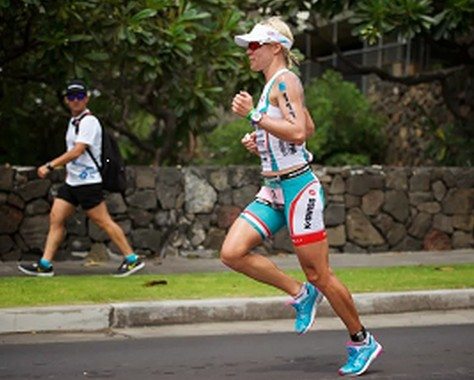Want to Run Faster?
Running is arguably the most important discipline in triathlon. It is the last leg, takes place when the athlete is most tired, and on average has the most impact on his or her finish time. In addition, the run can be the most fun leg, or the most miserable for that matter. Strong runners who also nail the other phases of the race, such as the swim, bike and nutrition, can make up huge ground during the run. But as many of us who have had a bad race know, if we weren’t adequately prepared or made a mistake during the earlier legs, the run can seem to last forever while countless people pass us by.
So how can YOU become a faster runner? How can YOU be the person gaining ground at the end of a race? There are many things you can do, but I want to focus on two of the most important:
1. Become more efficient
Running economy is one of the most overlooked skills within triathlon. We rarely hear people talking about how to become faster through better form, but it is extremely important. Running more efficiently allows you to run faster while using less energy and putting less stress on your body. While each athlete is different and will naturally have a slightly different running style, there are some universal themes that all strong runners share:
- Balance/Posture – Your entire body, from your legs through your pelvis and up to your head, should be in a straight line with a slight forward lean. The faster you are running the more pronounced the forward lean should be. Think of it as being in a position of power and control. In this picture, Mirinda Carfrae is displaying very good balance and posture.

- Cadence – Most runners are most efficient at a cadence of around 90+ foot strikes per minute on each leg. What is your natural cadence? If you don’t know, find out. On your next run, track your foot strikes occasionally to determine your per minute average. If you are at or below 80, you should probably work to increase it.
- Arm carriage – This is very important, especially when you are tired. Keeping your arm swing cadence high will keep your foot cadence faster as well. Also think about keeping your arms relaxed, loose and bent at about 90 degrees.
- Knee lift – As you can see in the picture of Carefree, she has a high knee lift. This allows her to travel a great distance with each stride while avoiding over striding (foot landing in front of the knee which leads to a pronounced heel strike). On your next run, be cognizant of your knee lift. The easiest way to look for this is to see how far your lead foot is coming off the ground. The faster you are running the more knee lift you should have.
When it comes to improving your running economy, the first step is understanding where you are currently. Have a professional running coach observe you or have a friend take a video or some pictures of you while running. This will allow you to identify what you are doing well and what areas need focus. With some practice and repetition, you can begin to make small changes to your form that will take your running to the next level.
2. Train faster
We can’t expect to race fast if we don’t occasionally run fast during training. If you don’t already, think about adding speed work to your plan. Important adaptations take place when you do speed work. You develop your cardiovascular system, essentially your aerobic engine, so that you can sustain a harder workload. You develop your muscular and joint strength, so that you can run with more power and efficiency. And finally, you develop your mental ability to tolerate the pain of running hard, which is a skill all on its own. One thing to keep in mind, though, is speed work can increase your injury risk if not done properly, so if you are unsure of how to safely incorporate it into your training plan, I suggest utilizing a professional coach or joining a training group that does supervised track or treadmill workouts such as Experience Triathlon.
There are many ways to become a faster runner, but these are arguably the most important. By running more efficiently and adding speed work into your training routine, you will be able to reach the finish line more quickly in 2015, and you’ll have more fun doing it!
Jim Levesque is a USAT certified Triathlon Coach with Experience Triathlon. He also leads ET’s downtown Chicago locations and activites. As leaders in the endurance services industry, Coach Jim and the Experience Triathlon staff help athletes of all ages and abilities achieve success in training, racing and life. Learn more about Coach Jim and Experience Triathlon at www.experiencetriathlon.com.


Comments (1)
Excellent article, Jim! Thanks for sharing your experience with us!!
Comments are closed.